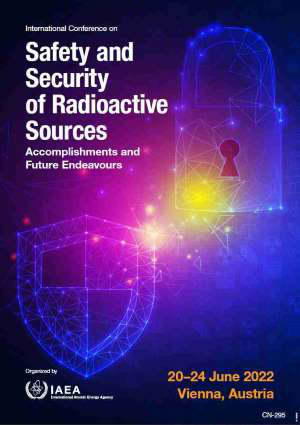Speaker
Description
In response to a US domestic need for TRU sealed source disposition, DOE/NNSA initiated a project in 1998 called the Off-site Source Recovery Project (OSRP) at Los Alamos National Laboratory (LANL). The need was in fact worldwide, since many countries did not have process, regulations, or personnel to accomplish TRU source repatriation. From 2005 to 2010 the NNSA/OSRP had recovered 422 sealed sources in 14 countries . By 2021 an additional 754 TRU sources had been recovered in 17 IAEA Member States. The purpose of this paper is to high light the work that has been done and to emphasize what made this success possible.
In 2005 the IAEA and NNSA/GTRI worked together on a pilot project to collect obsolete TRU sources and at NECSA in South Africa. This work was a regional effort involving IAEA, NNSA/OSRP, AFRA, and NECSA to collect a regional group of sources and package them for repatriation and final disposition in a geologic repository in the US. This effort was highly successful and laid the groundwork for further efforts.
The requirements for a successful repatriation effort were multifaceted and followed many of the precepts of IAEA Pub. 1657, “The Management of Disused Radioactive Sources” No. NW-T-1.3 (2014). The need for a regulatory authority in country, a central storage facility, a current inventory, approved packaging, proper source characterization in line with a pathway and facility for final disposition, and a willing Member State to receive the repatriated sources. The IAEA has worked very hard to help member states establish regulatory authority in each state. IAEA has used its Technical Cooperation programs to help countries create inventories with sufficient information to allow potential repatriation of US origin TRU sealed sources. The advent of LANL-OSRP with a proven track record in US domestic TRU source recoveries provided a process, tools, personnel, and funding to allow this work to move forward.
The accomplishments of NNSA/OSRP are obvious as these efforts expanded between 2010 and 2021, as more IAEA Member States became involved. The need became clearer as Member State inventories identified specific types of source-containing devices that were unlikely to be eligible for disposition in most Member States. The work of IAEA to create a separate disposition pathway for beta/gamma sources via the Bore Hole project additionally emphasizes that long lived radioisotopes may continue to need TRU source repatriation and disposition well into the future.
| Country OR Intl. Organization | USA |
|---|

